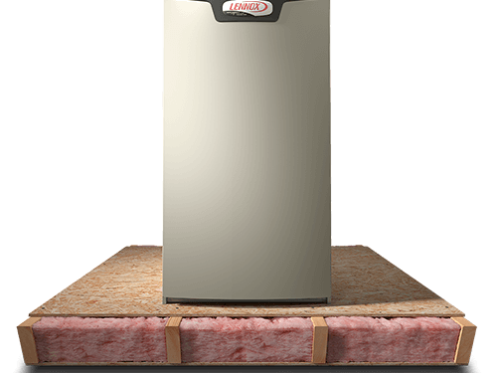Are you in the market for a new furnace? If so, you’re probably wondering where to start. This guide will walk you through the process of choosing and buying a furnace so that you can feel confident in your decision. We’ll cover everything from size and type to price and installation. By the end of this post, you’ll know exactly what type of furnace you need.
Size
The furnace you buy should be based on the size of your house. The right size will ensure that it can keep up with the demands of your home during the heating season while saving you money in the long run. This is because a furnace that’s too small will have to work extra hard, leading to decreased efficiency and increased energy bills. A furnace that’s too large will cycle on and off as it tries unsuccessfully to heat your home, wasting energy by cycling excessively.
This size also affects the noise level of the unit. Furnaces come in three different sizes: small, medium, and large. Small furnaces are typically for homes with a lower heating load, and medium and large furnaces are for homes with a higher heating load.
Type
There are four types of furnaces: gas, electric, oil, and propane. Gas furnaces are more common, but electric furnaces do have a place in the marketplace. Electric furnaces cost less to purchase and install because they don’t need venting. They also come with their own heating sources, so they’re ideal for homes without gas hookups or complex heating repairs. However, the one drawback is heat output.
Electric furnaces are not as efficient as gas furnaces and tend to be less powerful. If you have a large home, an electric furnace may not keep up with the heating load. This means you may need to purchase a giant furnace, which will negate some of the cost savings you initially realized.
Oil furnaces are more common in areas where natural gas is less prevalent. Many homeowners find it easier to get oil delivered, but these furnaces are typically less efficient than their gas counterparts.
Forced air propane furnaces are also available for homes without access to natural gas lines. These furnaces require existing propane tanks, but some models have integrated tanks. These furnaces are more efficient than oil furnaces and have longer lifespans.
The furnace you choose should also depend on where you live. A gas furnace is ideal if you live in an area with harsh winters. Gas furnaces are more efficient at higher temperatures, making heat faster during cold days and nights. They’re also less expensive to operate than other heating sources because they don’t require electricity to run the blower.
Price
The price of a furnace varies depending on the size, type, and features. The most basic gas furnaces start at around $1,000, whereas high-end models cost more than $10,000. Electric furnaces are typically less expensive than gas furnaces, with prices around $600.
The price is also affected by the installation. If you have a contractor install the furnace, expect to pay anywhere from $500 to $1,500. This includes the cost of the furnace, installation, and any necessary permits.
Installation
The installation of a new furnace is a big job that should be done by a professional. Improper installation can decrease the unit’s efficiency, create a safety hazard, or even fire. If you have a new furnace installed, ask your contractor about any available warranties for the installation. If you are around Santa Clarita and Antelope Valley areas and you need a furnace installation done, reach out to Affordable Air & Heating for affordable installation services.
You should also consider the location of your old furnace before buying and installing your new one. Your home may have multiple heating zones, so you’ll want to know where the old furnace was located. This will help you save on installation costs because professionals won’t have to drill new holes for your ducts.
Speed
Efficiency
Gas furnaces are more efficient than electric furnaces because they don’t require electricity to run the blower. This means that you’ll use less energy to heat your home, which will save you money on your monthly utility bill.
Oil furnaces are the least efficient of all the common types of furnaces. They use a lot of energy to produce heat, which can be expensive to operate. Forced air propane furnaces are more efficient than oil furnaces and longer lifespan.
The efficiency of a furnace is measured in terms of the Annual Fuel Utilization Efficiency (AFUE). This number tells you how much of the fuel used by the furnace is converted into heat. The higher the AFUE, the more efficient the furnace. Most gas furnaces have an AFUE of 80% or higher, and most electric furnaces have only 50%.
When shopping for a new furnace, be sure to look for the AFUE rating. This will help you choose the most efficient option for your home.
Noise
Gas furnaces are typically noisier than electric furnaces because they use fans to distribute the heat throughout your home. If you’re concerned about noise levels in your household, an electric furnace may be a better option.
Forced air propane models are quieter than gas and oil models because they lack a fan. However, they are still louder than electric furnaces.
Maintenance
Gas furnaces require regular heating maintenance, including cleaning and inspection. If you don’t do this, your gas bill may be higher than usual, and the unit could shorten its lifespan. An electric furnace needs very little maintenance beyond checking for any damage.
With oil furnaces, you also have to replace the filter every five to seven months. This can be inconvenient and cost you an extra $25-$50 per year. If you want a furnace that requires little maintenance, go with an electric model. It’s relatively inexpensive to maintain, especially if your only concern is changing the filter.
If you’re looking for a more efficient option, go with a gas furnace. You’ll have to spend some time cleaning and maintaining it, but you won’t waste money on your energy bill.
Durability
Gas furnaces are generally the most durable option because they don’t use an internal fan to distribute heat. This means there is less chance for something to go wrong with the furnace. Electric furnaces are less durable than gas models because they have more moving parts. This increases the likelihood of a malfunction and makes them more prone to wear and tear.
Oil furnaces are the least durable of all the common types of furnaces. They have many moving parts and are less efficient than gas furnaces. If you want something that will stand the test of time, choose a gas furnace. It has fewer moving parts, so it’s less prone to breaking down.
Purchasing a furnace for your Canyon Country, CA, home can be a big decision, and it’s not one that you want to make quickly because your furnace will have to last for at least 10 years. After buying your furnace, you will need services like installation, maintenance, and repair. Here is where Affordable Air & Heating comes in to help you. We’re a full-service heating company and cooling company that can take care of all your furnace and air conditioning needs from installation to repair. We have years of experience in the industry and know how to get the job done right.
Reach out to Affordable Air & Heating today for Expert HVAC service




